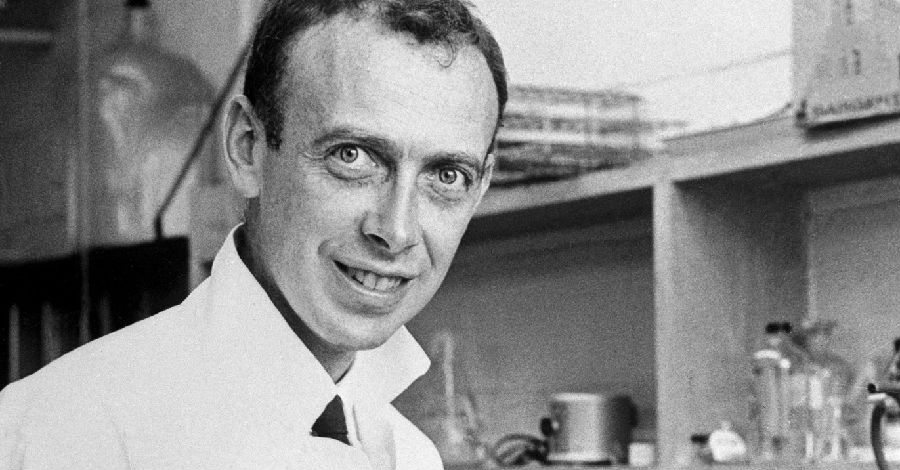(单词翻译:单击)
In an exceedingly distinguished career, he would win two Nobel Prizes (for chemistry in 1954 and peace in 1962), but with DNA he became convinced that the structure was a triple helix, not a double one, and never quite got on the right track. Instead, victory fell to an unlikely quartet of scientists in England who didn't work as a team, often weren't on speaking terms, and were for the most part novices in the field.
鲍林一生成就斐然,他两次获得诺贝尔奖(1954年获化学奖,1962年获和平奖)。可是在DNA研究方面,由于他错误地认定其结构是三链螺旋型,而不是二链螺旋型的,他的研究从未走上正轨,因而胜利的桂冠最终戴到了4位英国科学家的头上。这4位科学家不是一个小组,经常互不理睬,而且在很大程度是这一领域的新手。
Of the four, the nearest to a conventional boffin was Maurice Wilkins, who had spent much of the Second World War helping to design the atomic bomb. Two of the others, Rosalind Franklin and Francis Crick, had passed their war years working on mines for the British government — Crick of the type that blow up, Franklin of the type that produce coal.
他们4位中最称得上是普通的设计师的是莫利斯·威尔金斯,他在第二次世界大战期间的许多时间里待在密室中帮助设计原子弹。同一时期,他们中的另外两个,罗萨林·富兰克林和弗朗西斯·克里克任职于英国政府,研究采矿,后者负责爆破,前者负责采煤。
The most unconventional of the foursome was James Watson, an American prodigy who had distinguished himself as a boy as a member of a highly popular radio program called The Quiz Kids (and thus could claim to be at least part of the inspiration for some of the members of the Glass family in Franny and Zooey and other works by J. D. Salinger) and who had entered the University of Chicago aged just fifteen. He had earned his Ph.D. by the age of twenty-two and was now attached to the famous Cavendish Laboratory in Cambridge. In 1951, he was a gawky twenty-three-year-old with a strikingly lively head of hair that appears in photographs to be straining to attach itself to some powerful magnet just out of frame.
这4位科学家中,最不平常的是詹姆斯·沃森,他是一个堪称天才的美国人,他小时候是风靡一时的电台节目《儿童智力竞赛》的成员(可以说,他至少在某种程度上从J.D.塞林格的《弗兰妮与卓埃》中的格拉斯家族成员身上及其他一些著作受到了启发),他15岁就进了芝加哥大学,22岁就获得了博士学位,当时在剑桥大学著名的卡文迪许实验室工作。1951年,他刚刚23岁,长着一头乱蓬蓬的头发,在照片上看上去犹如被框外什么强大的磁铁拉拽着似的。


